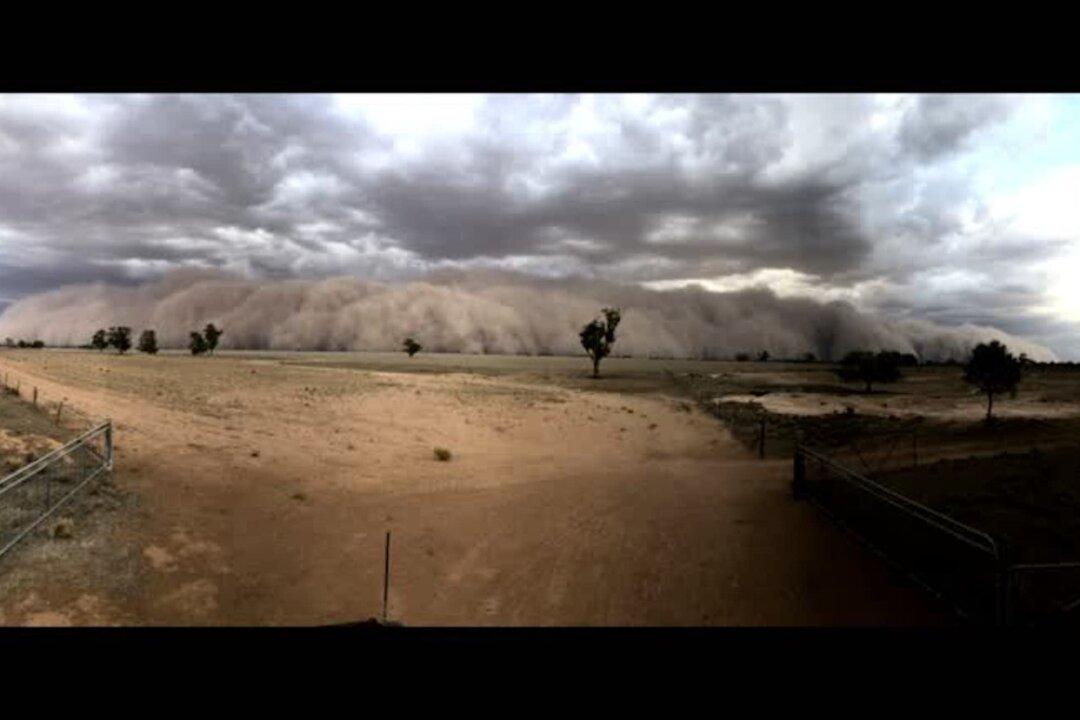Large hailstones, severe thunderstorms, and “apocalyptic” dust storms battered parts of southeastern Australia as some of the worst blazes the region has seen in decades continued to ravage the drought-stricken region.
Canberra was pelted with intense hail storms that left two tourists hospitalized with minor injuries and saw cars and buildings destroyed. Golf ball-sized hailstones and wind gusts up to about 72 miles per hour ripped branches from trees and smashed car windows. Emergency services were warning people in the area to “move cars undercover and away from trees and power lines.”





